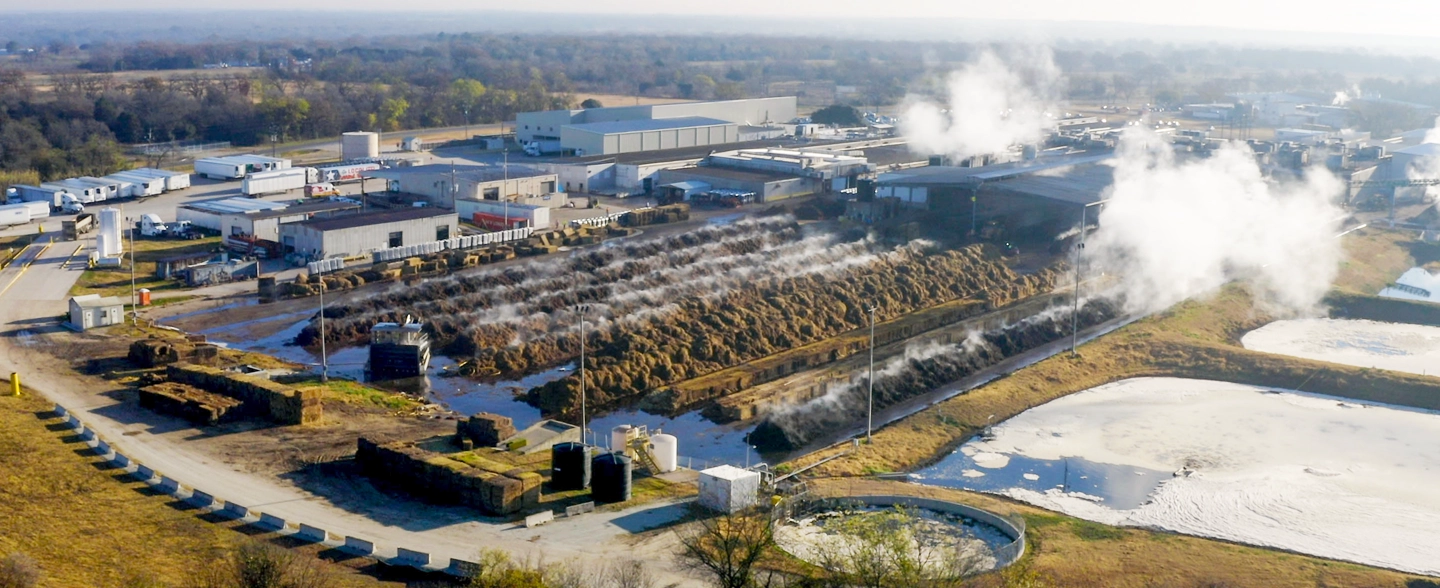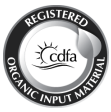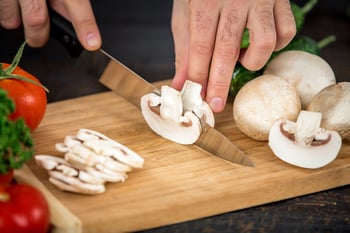Generations of Innovation, Rooted in Sustainability



Table of Contents
A Long History of Sustainable Innovation
While mushrooms are recognized for their umami flavor, versatility, and health benefits, they’re also among the most sustainable foods on the planet, thanks to their uniquely efficient growing process.
At Monterey Mushrooms®, we’ve embraced sustainability for more than five decades — not as a trend, but as a responsibility. From growing and packaging to transport, every step is designed to minimize waste and maximize impact.
As a proud member of the International Fresh Produce Association (IFPA) Sustainability Committee, we’re helping shape a shared vision for sustainable sourcing and recyclable, domestically produced packaging.
We’re cultivating more than a meal. We’re nurturing a sustainable future.
“… we are weaving sustainability into the ways we work together and driving an escalating approach of compliance, technical considerations, and strategy.”
— Paul Hardy, CEO, Monterey Mushrooms
Our Sustainability Initiatives
Sustainability at Monterey Mushrooms isn't just a buzzword; it's a core part of our operational strategy. We believe that true stewardship means embedding responsible practices into our daily work, from the farm to the front office. It's an evolving commitment that touches every part of our company.
Learn about The Heart and Soul of Monterey Mushrooms and how we grow our favorite fungi.
Environmental Sustainability: Farming, the Monterey Mushrooms Way
Growing mushrooms is fascinating. If you’re like most people, you probably haven’t thought about the process. Take a look at how we cultivate and package mushrooms and how each step contributes to our environmental sustainability initiatives.
- Mushrooms are an incredibly sustainable and resource-efficient food. According to the Mushroom Council, only 1.8 gallons of water are needed to grow a pound of mushrooms, and only 0.5 kg of CO2 emissions are produced.
- Our process starts with nutrient-rich compost made from recycled agricultural materials, diverting valuable resources away from local landfills.
- Our farms use advanced vertical stacking techniques, helping us to sustainably grow over one million mushrooms per acre of valuable farmland.
- With facilities strategically located across North America, we shorten food miles to deliver fresher produce while reducing transportation emissions.
- Nothing goes to waste; our organic spent compost is recycled as a nutrient-rich soil amendment for landscapers and other agricultural partners. We sell 161 tons of spent compost each year.
- Our product tills are made from 100% post-consumer recycled materials and are specifically designed to be easily sorted for future recycling.
Innovative Sustainable Packaging
We’ve been packaging pioneers since the 1980s, and that spirit of innovation continues today. Our tills are already made from 100% post-consumer recycled materials (rPET), and we are now enhancing them with a near-infrared (NIR) sortable colorant. This advancement ensures our packaging can be properly sorted by recycling facilities and given yet another life, keeping plastic out of landfills and supporting a true circular economy.
See exactly how we're "packaging a greener future" in this video.
People & Culture: Rooted in Our Team & Communities
At Monterey Mushrooms, we don’t just grow mushrooms; we grow people.
That’s our philosophy, and it’s both simple and all-encompassing. It guides everything we do, from investing in our team's personal and professional development to supporting the local communities where we operate.
- We are committed to a diverse and inclusive team, building our business on a powerful foundation of respect, hard work, and true community.
- We invest in our team through vital training programs that cover workplace harassment, safety, and our company-wide sustainability initiatives.
- We support the families and children of our team by providing annual scholarships to dependent children of full-time employees. Since its inception, the program has awarded 2,633 grants, totaling $4.1 million, in support of higher learning.
- We foster open feedback through biannual engagement surveys; our commitment to listening is reflected in an outstanding 96% employee participation rate.
- Our dedication to people & culture extends to our rich history of community engagement, volunteerism, and other initiatives.
“Sustainability is a part of our connection to the local communities, the ecosystems around our farms, and our engagement across the company.”
— Paul Hardy, CEO, Monterey Mushrooms
Governance: Ethical, Transparent, Accountable
Good governance is the foundation of responsible sustainability, ensuring our decisions, policies, and practices are ethical, transparent, and accountable. At Monterey Mushrooms, we’ve created a culture of responsibility where sustainability is embedded in our long-term strategy and everyday decisions, guiding the way our products are made, packaged, and delivered.
- We established a sustainability task force to improve data quality for customers and investors and to identify opportunities for improving sustainability across all business units.
- Leadership is implementing a whistleblower policy and finalizing a business continuity policy.
Our governance initiatives have enabled us to align our sustainability goals with real-world actions, manage risks effectively, and foster trust with customers, partners, and communities. Ethical operations also extend to how we grow and handle our mushrooms — ensuring food safety, traceability, and integrity at every stage.
Food Safety Compliance:
As an industry leader, we fully comply with the highest standard of food safety, including:
- Full compliance with the FDA good manufacturing practices, a system to ensure that products are consistently produced and controlled according to quality standards
- Certification by PrimusGFS, a global, third-party food safety initiative that audits each part of our produce supply chain
- A rigorous, ERP-based traceability program that tracks all products directly to source, allowing for rapid identification and resolution of any issues
Third-Party Validation & Certifications
Together, We’re Growing a More Sustainable Future
Whether you’re enjoying our mushrooms at home or serving millions of customers, we’re proud to share the benefits of responsible growing with everyone we reach:
For Consumers: Enjoy delicious, nutrient-rich mushrooms grown with care for the planet — from farms powered by renewable energy to packaging made for recycling. Check out our recipes for inspiration for incorporating more mushrooms into your menus.
For Retailers: Offer your customers premium mushrooms backed by verified sustainability practices, consistent quality, and reliable North American supply. Learn more about why Monterey Mushrooms should be on your shelves.
For Food Manufacturers: Source a versatile, high-quality ingredient with a low environmental footprint and dependable year-round availability. Learn more about the fresh and organic clean-label mushrooms you need.
For Foodservice Operators: Create flavorful, sustainable dishes with fresh mushrooms cultivated through environmentally sound farming and local distribution. Learn more about the mushroom products we sell and how we can prepare and package them for you.
See where to buy Monterey Mushrooms® products and join us in supporting a more sustainable food system.
FAQ
Why are mushrooms considered a sustainable food?
Mushrooms are one of the most sustainable foods you can buy. They are grown vertically (saving land), require very little water and energy (1.8 gallons per pound), and are grown on recycled agricultural materials — all resulting in a tiny carbon footprint.
Where are Monterey Mushrooms grown?
We operate farms across North America — including multiple U.S. states and Mexico — allowing us to grow locally and deliver fresher mushrooms with fewer food miles.
Does Monterey Mushrooms grow organic mushrooms?
We grow both conventional and USDA Certified Organic mushrooms. Our organic farming practices adhere to all strict federal guidelines, ensuring that no prohibited substances are used from the start of the compost to the final packaged product.
How much land is needed to grow mushrooms?
Mushrooms can be incredibly land-efficient. At Monterey Mushrooms, we use vertical stacking on our farms, which allows us to grow over one million mushrooms per acre of valuable farmland.
How does Monterey Mushrooms create compost for growing mushrooms?
We create our nutrient-rich compost by recycling agricultural materials like straw, racehorse bedding, and other regional nitrogen sources. This 23-day process diverts materials that would otherwise go to a landfill and creates the perfect food for our spawn (mushroom seeds) to grow.
How much water and electricity does it take to grow mushrooms?
Mushrooms are incredibly resource-efficient. It takes only 1.8 gallons of water and 1.0 kW of electricity to grow one pound of mushrooms. (For perspective, some other crops can take hundreds of gallons!) We also recycle water by collecting runoff on our compost wharves and diverting it to catch basins for reuse in the composting process.
What is the carbon footprint of Monterey Mushrooms?
The carbon footprint of mushrooms is very low. Growing one pound of our mushrooms produces only 0.5 kg of CO2 emissions. This makes them a highly sustainable food, especially when compared to many other protein sources.
How does Monterey Mushrooms reduce carbon emissions during transportation?
We reduce transportation emissions by reducing "food miles." Our farms are strategically located across North America, so our mushrooms are "locally grown" for most major cities. This shortens the distance from our farm to your plate, delivering a fresher product with a smaller carbon footprint.
What does Monterey Mushrooms do with the compost after mushroom harvest?
Nothing goes to waste. After harvest, the "spent mushroom compost" is a fantastic, nutrient-rich soil amendment. We sell over 160 tons of it each year to landscapers and other farms, who use it to improve soil structure and water retention. It’s a perfect example of our circular-economy approach.
What makes mushrooms a circular crop?
Mushrooms grow on recycled materials and produce spent compost that enriches new soil, making them a true example of circular agriculture.
Is Monterey Mushrooms’ packaging recyclable?
Yes. Our black tills are made from 100% recycled plastic (rPET) and are now made with an NIR (near-infrared) sortable colorant. This special material allows recycling centers to "see" and sort our packaging correctly so it can be recycled again.
What does the rPET mean in your packaging?
rPET stands for recycled polyethylene terephthalate. It's plastic that has already been used by consumers (like water bottles) and then recycled into a new material. By using 100% rPET, we keep plastic out of landfills and participate in a circular economy.
What sustainability goals does Monterey Mushrooms have for the future?
We continue to innovate toward a fully closed-loop system, with goals to further reduce water use, expand solar power, and eliminate non-recyclable packaging across all operations.
Who works at Monterey Mushrooms?
Behind every mushroom is a dedicated team. Our family-oriented culture focuses on putting our people first and providing a supportive work environment. With employees spanning the continent, we are a business built on a foundation of respect, hard work, and community.
What is the Carl Victor Fields Scholarship Program at Monterey Mushrooms?
This scholarship is a key part of our "growing people" philosophy. We provide annual scholarships to the children of our full-time employees to support their higher education. Since its inception, we've awarded over 2,600 grants totaling more than $4.1 million.




